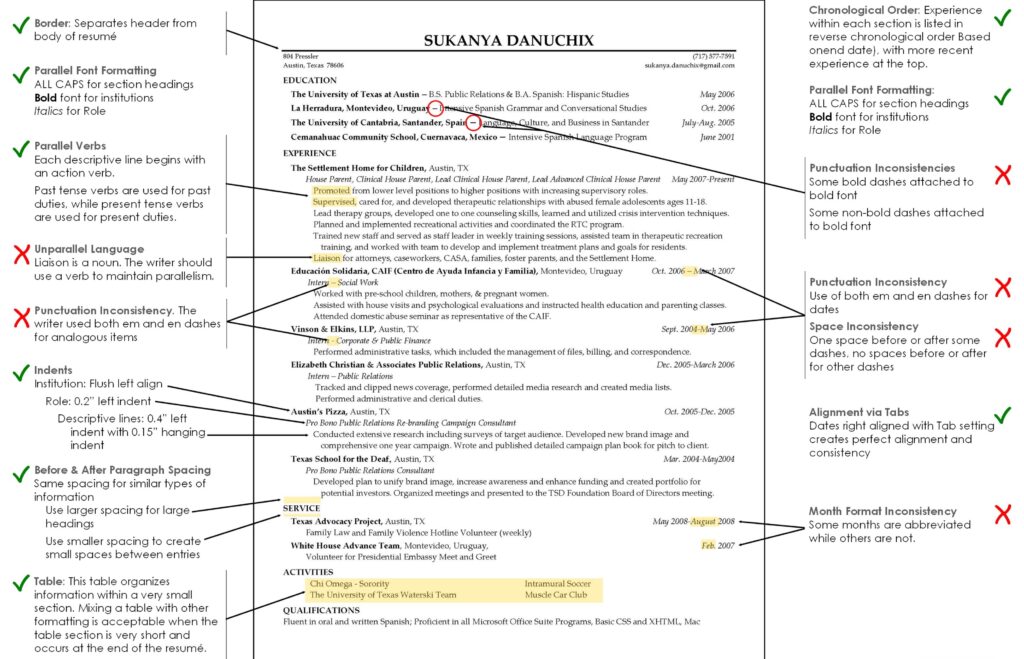Although most of the following principles apply to any good resumé, some differ from other resumé principles that you have heard. Law school application resumés serve a slightly different purpose than other resumés. Specifically, other resumés typically serve to (1) start a conversation that eventually takes place in an interview and (2) demonstrate qualification for a specific job. A law school application resumé serves a much broader purpose and most applicants do not interview with law school admissions officers.
Training your Reader
Busy admissions officers do not want to struggle to find aspects of your resumé. Thus, you should format each section of your resumé very similarly to other sections of your resumé. In a sense, you are telling your reader where to look for items such as dates via the way you arrange those items in the first section. So, if you right-justify the dates in the first section, then you should right justify the dates throughout the resumé. The same applies for the font formatting choices, such as bold, italics, and indentation.
Professional Formatting
My generation (probably the group that make up your middle and high school teachers, your parents, etcetera) has failed to educate the iGen (Gen Z or whatever term fits) to use word processing apps properly. So you use obviously amateur formatting to create the look that you want. IT DOES NOT WORK and it looks like shit.
- Do you use consecutive tabs and spaces to horizontally align text? Yes? If so, you are guilty.
- Do you use the “enter” key to create vertical spacing? Yes? If so, you are guilty.
Check out my video on right-align tabs, paragraph spacing, and other ways to make your resumé formatting look more professional.
Order
Within a section, you should put entries in reverse chronological order according to the end date.
Include Almost Everything
Because the best law school application resumés showcase very busy, outgoing applicants, you should include almost every activity that has any level of formality since high school. This showcases your multidimensional skill set and personality. I know, I know … for your regular resumé submissions, you morphed your resumé to include only relevant experience. That rule does NOT apply here.
PERFECTION!!!!
Anecdote. As a growing Austin law firm recently looked for new associates, a partner narrowed his candidates down to just three. Just before calling the leading candidate to make the job offer, he read over the candidate’s resumé one last time. In that final read, he found a comma that clearly did not belong. So, he called the second most qualified candidate to make the job offer. This may seem extreme, but I would do the same. When hiring someone or admitting that person to your law school, you are committing to having that person represent your firm or your law school. Although small erros are inevitable in daily work, one should have the will and commitment to make a one or two page resumé perfect. An applicant should start the quest for perfection by calling the document a resumé rather than a resume.
Example. A student sent the resumé below to me for last minute review. She told me that she almost submitted it to law schools without sending it to me because she thought that she had eliminated all errors on her own. What do you think? Her look is great, but the errors would leave a very poor impression with the vast majority of admissions officers. Click image to enlarge and read through the the good and bad of the resumé in the image below. For those of us who review resumés regularly, we instantly notice the mistakes, like the ones in the image below.


